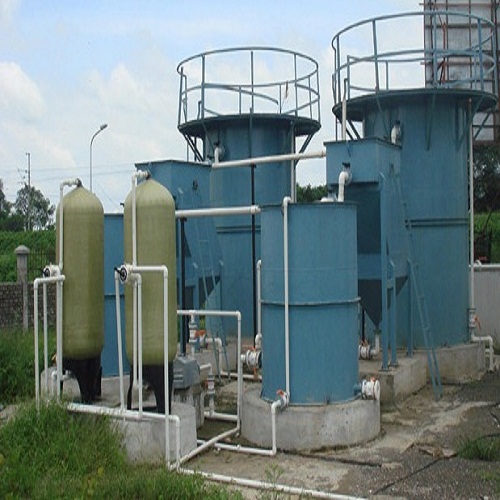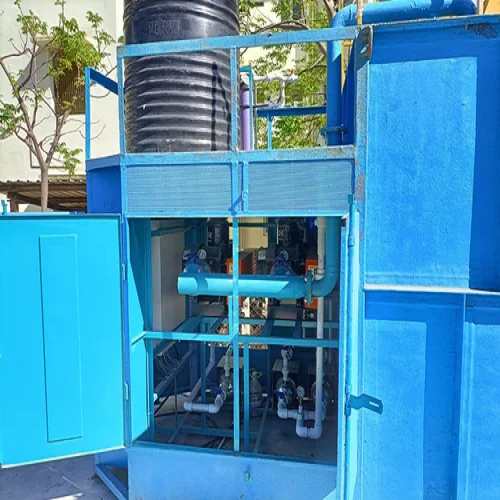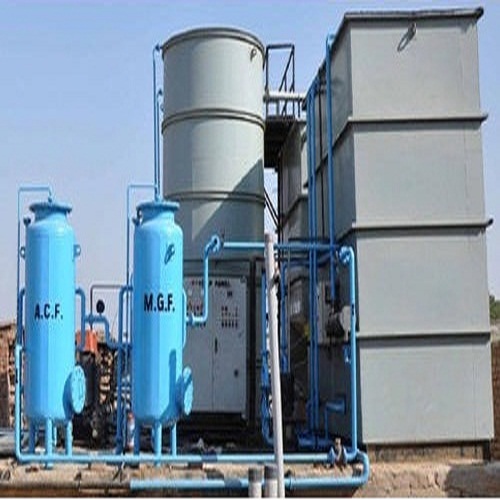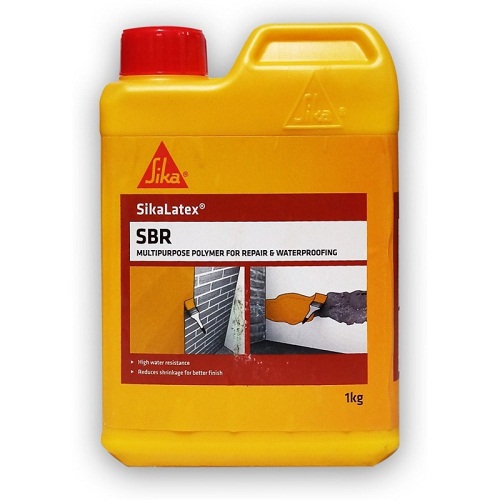
our category
EFFLUENT TREATMENT PLANT
Effluent Treatment Plant (ETP): Overview and Functionality
An Effluent Treatment Plant (ETP) is a facility designed to treat industrial effluents or wastewater to make it suitable for discharge into the environment or for reuse. Industrial processes often generate wastewater that contains hazardous chemicals, oils, grease, suspended solids, and other pollutants that can negatively impact the environment if left untreated. ETPs are essential for industries such as textiles, pharmaceuticals, chemicals, food processing, and manufacturing, as they ensure compliance with environmental regulations while minimizing environmental impact.
Enquire Now
Key Components of an Effluent Treatment Plant (ETP)
-
Pre-Treatment Section:
- Screening: The first step in wastewater treatment involves screening to remove large particles, debris, and solid waste from the effluent. This prevents clogging of downstream equipment and protects the treatment system from damage.
- Oil & Grease Removal: Many industries, especially food processing and chemical plants, produce effluents containing oil and grease. Oil skimmers or flotation units are used to remove these substances, as they can interfere with biological treatment processes.
-
Primary Treatment:
- Sedimentation: This phase involves the physical settling of suspended solids. In the sedimentation tank, the heavier particles settle at the bottom, while the clearer water rises to the top for further treatment.
- Flocculation and Coagulation: Coagulants and flocculants are added to the effluent to bind fine particles together, forming larger aggregates (flocs). These flocs can then be removed by sedimentation or filtration.
-
Secondary Treatment:
- Biological Treatment: The effluent is treated biologically in this stage to remove dissolved and suspended organic pollutants. This can be done using activated sludge systems, moving bed biofilm reactors (MBBR), or sequential batch reactors (SBR). Microorganisms break down organic materials in the wastewater.
- Aeration: In many biological treatment processes, aeration is provided to support microbial growth and promote the degradation of organic contaminants. Aeration can be done using diffused air systems or mechanical aerators.
-
Tertiary Treatment:
- Filtration: After secondary treatment, the effluent is passed through filters (such as sand filters or activated carbon filters) to remove any remaining suspended solids and dissolved contaminants.
- Chemical Treatment: In some cases, additional chemicals are used for disinfection or to remove specific pollutants, such as heavy metals, nutrients (nitrogen and phosphorus), or color from the effluent.
- Membrane Filtration: Advanced filtration techniques like ultrafiltration (UF) or reverse osmosis (RO) may be used in industries with stringent discharge standards, offering additional purification to meet high-quality effluent requirements.
-
Sludge Treatment:
- The solids removed from the wastewater during primary and secondary treatment need to be treated and disposed of. Sludge can be treated by methods such as thickening, dewatering, and composting. In some cases, the sludge can be used for further applications like fertilizer production or energy generation through anaerobic digestion.
-
Disinfection:
- To ensure that the effluent is free from harmful pathogens, the treated water is often subjected to disinfection using ultraviolet (UV) light, chlorination, or ozonation. This process helps eliminate any remaining bacteria or viruses, making the water safe for discharge or reuse.
-
Effluent Disposal or Reuse:
- After successful treatment, the effluent can either be safely discharged into rivers, lakes, or seas, or it can be reused within the industry for non-potable applications such as cooling, irrigation, or cleaning. Reusing treated effluent helps reduce the overall water consumption in industries, contributing to sustainability.
How an Effluent Treatment Plant Works
The operation of an ETP generally follows a sequence of stages that work together to remove physical, chemical, and biological pollutants from wastewater:
-
Influent Collection:
- The wastewater generated from industrial processes is collected in the influent tank or channel. The flow rate and characteristics of the influent are continuously monitored to ensure the treatment process is properly calibrated.
-
Pre-Treatment:
- The influent water is passed through screening devices that remove large debris and particles. Oil and grease removal units are used in industries where such pollutants are present.
-
Primary Treatment:
- The wastewater is directed into the primary treatment tanks where gravity sedimentation occurs, allowing heavy solids to settle at the bottom. Coagulants and flocculants may also be added to enhance the removal of finer particles.
-
Secondary Treatment:
- The water is then treated biologically to break down organic contaminants using activated sludge, MBBR, or SBR processes. Aeration is provided to encourage microbial activity. During this phase, the majority of organic pollutants are removed.
-
Tertiary Treatment:
- Filtration and additional chemical treatments are used to further purify the water. If necessary, membrane filtration (like RO) is employed to meet stringent water quality requirements.
-
Sludge Handling:
- Sludge produced during the treatment process is collected and subjected to thickening, dewatering, or other methods to reduce its volume and facilitate safe disposal or reuse.
-
Effluent Discharge or Reuse:
- The treated water, now free from harmful pollutants, is either released into the environment or reused in the industry for applications like cooling, washing, or irrigation.
Types of Effluent Treatment Plants
-
Physical-Effluent Treatment Plant:
- In this type of ETP, the effluent is treated using physical methods such as filtration, sedimentation, and flotation. This approach is typically used for wastewater with low contamination levels or when the removal of large solids is the primary objective.
-
Chemical-Effluent Treatment Plant:
- This type uses chemical reactions to treat effluent, including neutralization, coagulation, flocculation, and precipitation. Chemical ETPs are often used to treat effluent containing dissolved pollutants like heavy metals, oils, and chemicals.
-
Biological-Effluent Treatment Plant:
- Biological processes are the core of this type of ETP, where microorganisms break down organic contaminants. It is commonly used in industries with high organic load, such as food processing, breweries, and pharmaceuticals.
-
Combined-Effluent Treatment Plant:
- A combination of physical, chemical, and biological treatment methods is used in combined ETPs to address complex wastewater characteristics. This approach is often used when the effluent contains a variety of pollutants, including organic, inorganic, and hazardous substances.
Advantages of an Effluent Treatment Plant
-
Environmental Protection:
- ETPs are crucial for preventing pollution and protecting water bodies, soil, and ecosystems from harmful effluents. By treating wastewater before discharge, industries can comply with environmental regulations and contribute to sustainability.
-
Water Reuse:
- An ETP allows industries to treat and reuse water for non-potable purposes, reducing the overall consumption of freshwater. This contributes to water conservation and reduces operational costs related to water procurement.
-
Compliance with Regulations:
- Effluent treatment plants help industries meet regulatory requirements for wastewater discharge. Most countries have strict guidelines for industrial effluent quality to protect public health and the environment, and ETPs are essential for compliance.
-
Waste Reduction:
- Through sludge treatment and resource recovery, ETPs help reduce the volume of waste generated by industrial operations. Some systems also allow for the recovery of valuable resources, such as energy, from the wastewater treatment process.
-
Health and Safety:
- By treating effluent and removing hazardous chemicals, bacteria, and toxins, ETPs improve public health by ensuring that treated wastewater is free from pathogens and contaminants.
Challenges of an Effluent Treatment Plant
-
High Operational Costs:
- ETPs require a significant investment in infrastructure, energy, and chemicals. The operational and maintenance costs for running an effluent treatment plant can be high, particularly for industries with large or complex wastewater treatment needs.
-
Sludge Disposal:
- Proper sludge management is a challenge for ETPs. The sludge produced during treatment must be handled carefully to avoid environmental contamination. Disposal or further processing of sludge often involves additional costs and regulatory compliance.
-
Complex Wastewater Characteristics:
- Some industrial effluents are highly toxic, contain complex chemicals, or have varying characteristics over time. Treating such effluents requires sophisticated systems and expertise, which can increase treatment costs and complexity.
-
Space and Design Constraints:
- The space required for large-scale effluent treatment plants can be significant, especially in industries located in urban or space-constrained areas. Compact designs and advanced treatment technologies can mitigate this challenge but may require higher capital investment.
Conclusion
An Effluent Treatment Plant (ETP) is a vital component in modern industries to ensure the safe disposal or reuse of industrial wastewater. By employing various physical, chemical, and biological treatment processes, an ETP removes contaminants from effluents, protecting the environment and public health. These plants also enable industries to comply with environmental regulations, reduce water consumption, and minimize waste generation. Despite the challenges involved, ETPs are essential for sustainable industrial operations and play a key role in conserving water resources and maintaining ecological balance.



